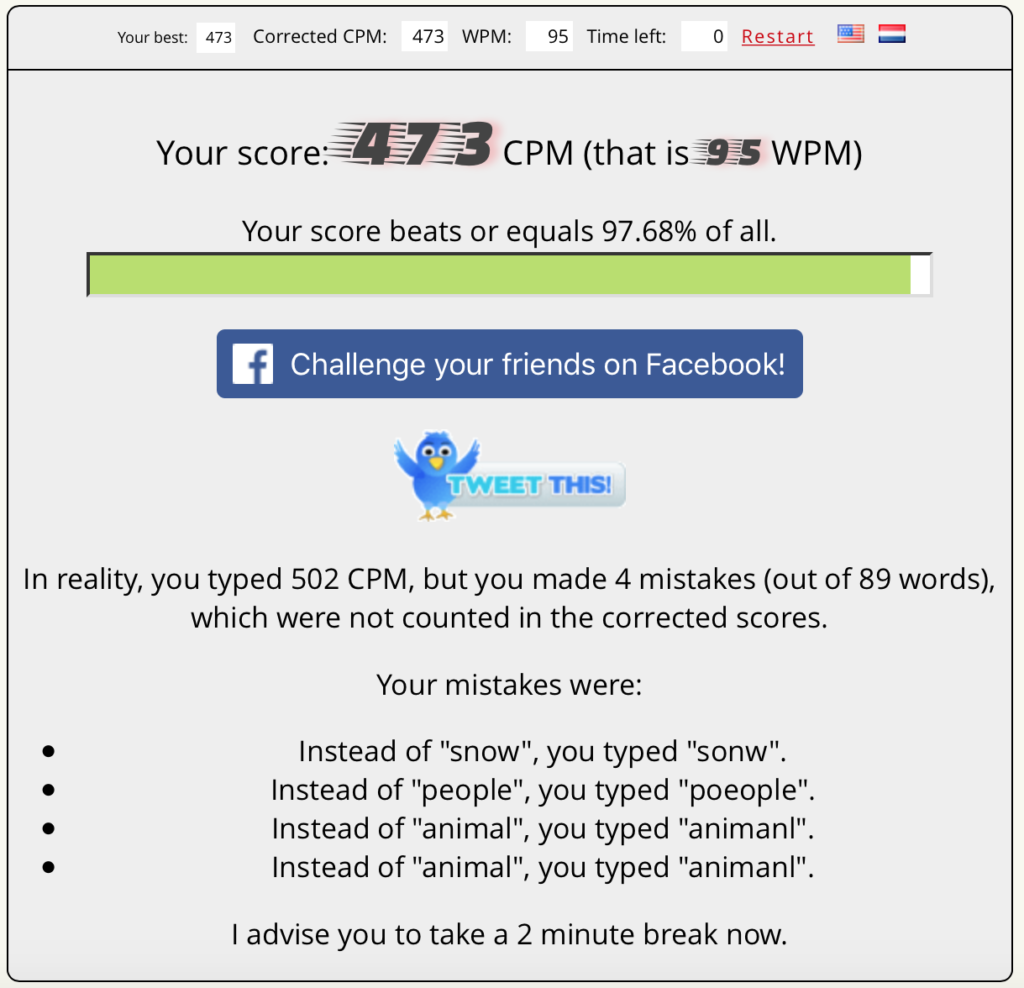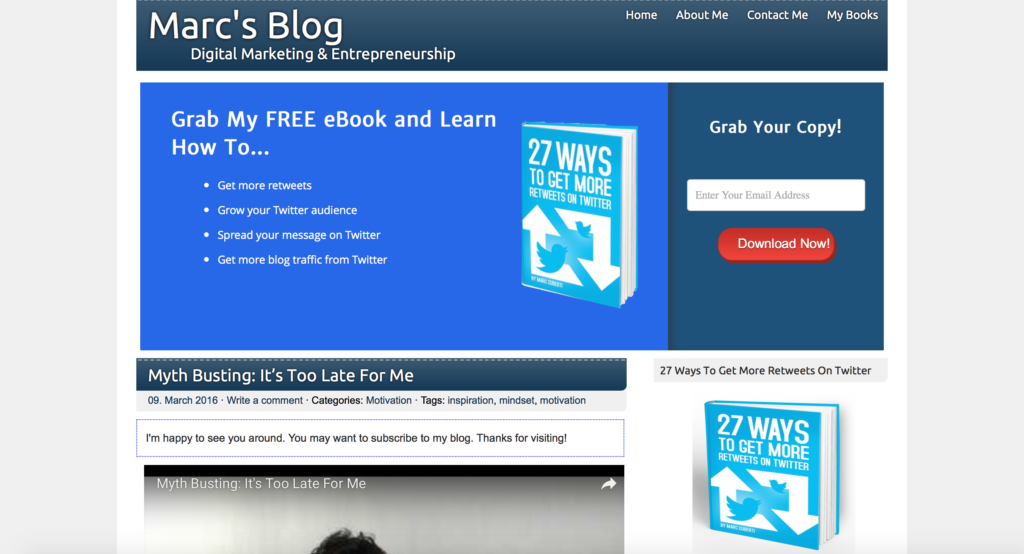We all give ourselves goals. While some people give themselves more ambitious goals than others, we declare what we’ll accomplish.
Stating what you’ll do and actually doing it are two different things.
Experience has taught us the truth behind that statement. Sometimes we don’t do what we’ll say. At other times, we watch other people not do as they say.
Repeatedly falling short of your goals is one of the biggest bumps you can hit along the journey. Some people feel stuck after trying again and again only to see no results.
However, there are some people who do as they say they’ll do. They’re the ones accomplishing all of their top goals. They’re the role models we look up to when our journeys get difficult.
While these people are our role models, the intent of having a role model is to someday reach their status, surpass them, or get significantly close to doing so. To do that, we need to do more of what we say we’ll do.
We need to accomplish more of the goals we give ourselves. Here’s the framework you can use to make that happen.
Get Clear On What You Want To Do
The first step towards achievement is getting clear on what you want to do. While this seems straightforward, it’s actually more complex. You need to look deeper behind each of the goals you give yourself.
In some cases, there is a goal behind the goal. A social media marketer may want to double his/her Twitter audience this year because that goal supports the goal of getting 100,000 blog visitors in one month.
An up-and-coming public speaker may decide to organize a meet-up in an attempt to land more public speaking gigs in the future.
We need to differentiate between our goals that are goals themselves and our other goals which move us closer towards our ideal goals.
Think more big picture for this part. By thinking of the big picture, you can expand your possibilities. For you, it may be easy to double your Twitter audience given your audience size. For me, it’s much more difficult. As of writing, doubling my Twitter audience means gaining another 400,000 followers.
That’s a goal that takes multiple years to reach given my current set up. I could tweak my set-up to achieve that goal in a year, but it would be an incredible challenge.
Instead of aiming to double my Twitter audience every year, I now ask 10 people (using permission marketing) to share my content every day.
Based on my ideal goal of getting 100,000 monthly visitors, it makes more sense for me to leverage permission marketing than aim to double my Twitter audience in one year.
One is very difficult while the other is easy. Permission marketing is also very scalable and can result in more long-term traffic than doubling my Twitter audience.
By identifying the ideal goals and the goals that only serve as passageways towards those ideal goals, you can determine your destination but maintain a flexible approach.
The flexible approach is important, but you only achieve that flexible approach by getting clear on what you want. If you need to get clear on what you want, and you don’t know how to categorize your goal, ask yourself this question:
Where do I want this to lead me?
Growing my social media audience is my way of getting more blog traffic.
Getting more blog traffic is my way of growing my email list.
So the ideal goal is to grow my email list. Blog traffic and social media growth are the passageways towards that goal. You can take different passageways. As long as you know where you’re supposed to end up, you have a much better chance of getting there.
Write It Down
I know that may be happening. Your mind is streaming with ideas and goals. You may feel excited now, but you need to give those ideas and goals a place to breathe. Ideas and goals breathe and grow on paper.
Writing down your declaration every day will train your subconscious to look for and think of new opportunities. This is why people who write their goals soon plan out the action steps. Your subconscious is preparing you behind the scenes to accomplish the goal.
You should write your top goal down every day. The more you write your goal, the more engrained it will become in your subconscious.
Schedule Time To Get It Done
If it’s not on the calendar, it doesn’t get done. The reason I’ve interviewed hundreds of people is because all of those interviews were in my calendar. If those interviews weren’t scheduled, they wouldn’t have happened.
While it’s easy to understand this concept with interviews and meetings, you can also schedule various tasks throughout your day.
What time will you write your blog post? What time will you do videos? When will you take your breaks?
All of these need to be scheduled in your calendar. Scheduling your goals will put you on the road to goal achievement and eliminate the decision making process.
One of the reasons people fall short of their potential is because they have too many decisions. Do you write the blog post or promote yourself on social media? If you decide to promote yourself on social media, which social network do you use? How do you use that social network? When do you decide to move onto the next task?
It hurt my mind just to write those questions, but questions like these wildly dash through our minds every day. Scheduling specific actions for specific times and dates eliminates this problem. Get your life on a schedule, and then you’ll end up doing more of what you say you’ll do.
To crave your need for spontaneity, you can give yourself some breaks in the day when you can do anything you please.
Delegate Most Of The Tasks In Your Life
I’ve been mentioning this more and more throughout my content. If you are not delegating, you will eventually stop moving forward. All of the most successful CEOs on the planet have hundreds, thousands, or even hundreds of thousands of employees working for their businesses.
Not all of the tasks in your life are created equal. Coaching your clients is more important than responding to non-client emails, but responding to these emails is still necessary. New emails create a sense of urgency which is often mixed up with importance.
How do you handle urgent emails and pursue important tasks such as coaching your clients? You delegate more tasks. You can delegate the responses for some of those emails. You can hire someone to grow your social media audience.
The more you delegate, the more of your time will open up. You can use this extra time to accomplish bigger goals that lead to a bigger profit. Not only will you do what you say you’ll do, but you can also set higher standards for yourself.
Instead of aiming for $5K/mo, you can go for $10K/mo.
With delegation, there are no limits to how much of your time you can get back. Just make surer the actions you take with your newfound time can easily pay off your employees’ salaries.
Keep Yourself Accountable
You can set up your process so that only you know about your goals. The issue with this route is that you can lie to yourself, even if you have good intentions.
Let’s say you got 1,000 blog visitors last month. If your goal was to get 7,000 blog visitors this month, and you end up getting 6,000 blog visitors, it’s tempting to call that a success and ignore the fact that you set a bigger goal.
Don’t get me wrong. A sixfold increase in monthly traffic is amazing. However, we can’t shrink the target if we’re worried about our abilities. The target you set at the start of the month should stay the same from Day 1 to the final day.
Stay true to the goals that you set. If you don’t, then it will be more difficult to do as you say you’ll do.
Instead of using private accountability to accomplish your goals, you need to leverage public accountability. Tell your quality friends and peers (the ones who will help and encourage you. Do not tell people who will tear you down) about your big goals.
You can also partner up with an accountability partner so you can keep each other on track. I’ve seen accountability partnerships where the person who achieves less of his/her ideal goals gives $50 to the person who achieved more of his/her ideal goals.
You can also join a Facebook Group where you post about your goals every day or week depending on the group. You can even publicly post your goals on social media and your blog.
It’s always better to let a small group of people know about your goals than no one at all.
In Conclusion
We all seek to become better at what we care about. We’ll set big goals and make mighty claims. Some of these people don’t accomplish their goals. Others hit their targets and push them further away to ignite more growth.
Your level of success depends on you identifying the right goals to focus on and then getting them done. Remember, if you’re going to give yourself a big goal, take massive action so you can see your goals become part of your reality.
What were your thoughts on these tactics? Do you have any advice for us? Do you have any questions for me? Sound off in the comments section below.










